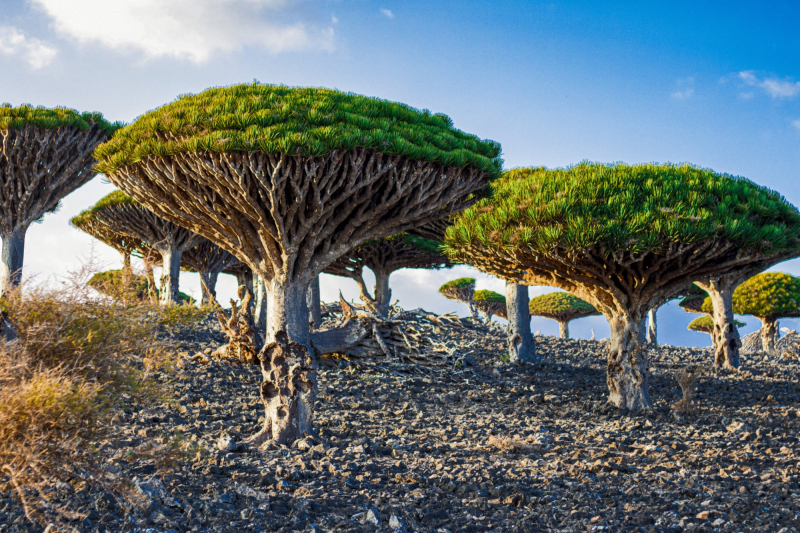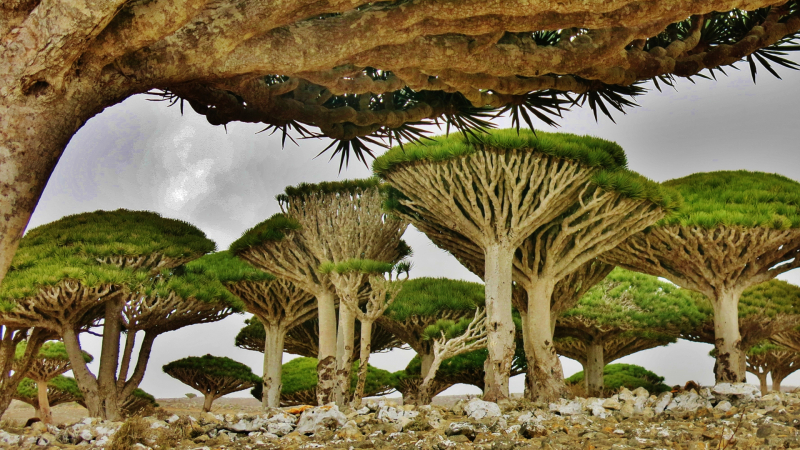Socotra, Yemen
One of those unusual places on Earth is Socotra. The archipelago, which is sandwiched between Yemen and Somalia, has managed to stay isolated, preserving its incredible biodiversity, including the dragon tree, which has come to serve as one of the region's symbols.
Socotra is referred to as the Galapagos of the Indian Ocean because it is home to a variety of unique plants and animals. It makes sense to draw comparisons to the South American island, but Socotra is also home to some of the most breathtaking landscapes that give the impression that one is on another planet. Despite its distinctiveness, there are still many unanswered questions about the archipelago.
When researching Socotra, many visitors' first concern is whether the area is secure. Despite being a part of Yemen, the archipelago is far from the civil war that has been raging there since 2014, making Socotra a safe place to visit. Unsurprisingly, the war has an impact on travel and tourism in the nation. For years, locals have observed tourists leaving the island. Slowly but surely, things are changing, and the island now only sees 3,000 tourists annually, making it an exciting vacation spot for those seeking a getaway from the tourist crush. When visiting Socotra, it is required to work with an agency, and they will be in charge of making all the arrangements.
Because of its rich natural resources, UNESCO designated Socotra as a World Natural Heritage site in 2008, and the island became known as the "Galapagos of the Indian Ocean." Socotra has over 800 plant species, including the amazing dragon's blood trees, and nearly 40% of them are unique to the island. Animal numbers are even more impressive, as Socotra is home to more than 90% of the archipelago's reptile species. It is undeniably a landscape that the traveler will not find anywhere else.
Socotra is home to nearly 60,000 people spread across the coast and mountains. They have been isolated for many years because paved roads and the airport are relatively new, allowing the island to be preserved.
There are two methods for getting to Socotra. One is to take a plane to Yemen's capital, Sanaa. The second involves departing from Dubai on a nonstop flight. Every Monday at 10 a.m., a flight departs Abu Dhabi, Dubai, and continues directly to Socotra. However, travelers cannot book these flights directly online; instead, they must go through an agency that will also handle the Visa arrangements. A seven-day tour will also be organized by the agencies; payment for this must be made at least two weeks in advance. Considering that they frequently have to sleep in tents, visitors shouldn't expect opulent accommodations.
Since Muslims make up the majority of the population in Socotra, modest attire is encouraged, especially when visiting villages. When in the city, women should cover their shoulders, knees, and hair with a scarf. Men should also cover their legs, so t-shirts and trekking pants are appropriate choices. In addition, it is advised to bring a hat, hiking boots, sunscreen (which is crucial to bring because it is not available on the island), tissues, a swimsuit, and warm clothing for the evening.
Location: Socotra island, Yemen

















